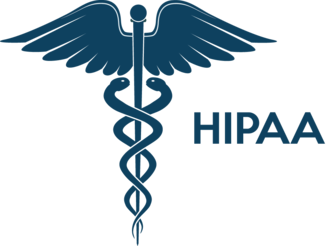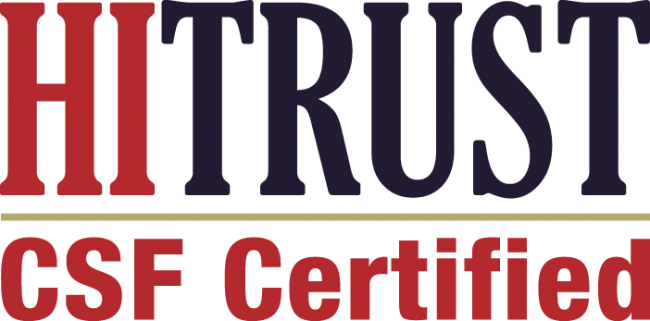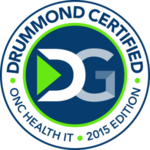Transforming the critical transition period through coordinated care and comprehensive support
The Journey Home: Why the First Steps Matter Most
Leaving the hospital after a serious illness or procedure should feel like a victory, a return to the comfort and familiarity of home. Yet for millions of patients, this transition becomes a source of anxiety, confusion, and sometimes dangerous complications. The statistics tell a sobering story: nearly 20% of Medicare patients are readmitted to the hospital within 30 days of discharge, often due to preventable issues related to poor care coordination and inadequate follow-up.
This is where Medicare’s Transitional Care Management (TCM) program steps in as a crucial bridge between hospital care and home recovery. TCM isn’t just another healthcare service—it’s a comprehensive approach designed to ensure that your journey from hospital bed to home is safe, supported, and successful.
Understanding Medicare Transitional Care Management
Medicare Transitional Care Management is a specialized program that provides intensive support during the critical first 30 days after hospital discharge. Think of it as having a dedicated healthcare team whose sole focus is making sure you don’t fall through the cracks during this vulnerable period.
The program encompasses several key components:
Immediate Post-Discharge Communication: Within 24-48 hours of leaving the hospital, you’ll receive a phone call from your healthcare provider to check on your condition, address immediate concerns, and ensure you understand your discharge instructions.
Comprehensive Care Planning: Your healthcare team creates a detailed plan that addresses your medications, follow-up appointments, warning signs to watch for, and specific instructions for your recovery at home.
Medication Management: One of the leading causes of readmission is medication errors or confusion. TCM includes thorough medication reconciliation to ensure you understand what to take, when to take it, and potential side effects to monitor.
Coordinated Follow-Up Care: Rather than leaving you to navigate multiple specialists and appointments on your own, TCM coordinates all aspects of your follow-up care, ensuring seamless communication between all healthcare providers involved in your recovery.
Addressing Your Fears: Common Concerns About Going Home
The transition from hospital to home often triggers a cascade of worries and concerns. Understanding these fears—and how TCM addresses them—can help ease the anxiety that many patients experience.
“What if something goes wrong and no one is there to help?”
This is perhaps the most common fear patients express. In the hospital, help is always just a call button away. At home, the silence can feel overwhelming. TCM addresses this concern through:
- 24/7 access to healthcare support: Most TCM programs provide round-the-clock access to healthcare professionals who can answer questions and provide guidance
- Clear emergency protocols: You’ll receive detailed instructions about when to call your doctor, when to go to the emergency room, and what symptoms require immediate attention
- Regular check-ins: Scheduled phone calls and visits ensure that someone is monitoring your progress and can identify problems before they become emergencies
“I don’t understand all these medications and instructions”
Hospital discharge can feel like drinking from a fire hose—suddenly you’re responsible for managing complex medication schedules, wound care, dietary restrictions, and activity limitations. TCM tackles this through:
- Simplified medication schedules: Healthcare providers work to streamline your medications when possible and provide clear, easy-to-follow schedules
- Written instructions in plain language: No more deciphering medical jargon—you’ll receive instructions written in clear, understandable terms
- Demonstration and practice: For procedures like wound care or using medical equipment, TCM includes hands-on instruction to ensure you’re comfortable and confident
“What if I can’t get to all my follow-up appointments?”
The period after hospital discharge often involves multiple appointments with various specialists, which can be overwhelming and logistically challenging. TCM helps by:
- Coordinating appointment scheduling: Rather than juggling multiple calls and schedules, your TCM team can help coordinate appointments at convenient times
- Transportation resources: Many programs can connect you with transportation services or help arrange rides to appointments
- Telehealth options: When appropriate, some follow-up visits can be conducted via phone or video call, reducing the burden of travel
“I’m afraid I’ll end up back in the hospital”
The fear of readmission is real and valid. TCM directly addresses this concern by:
- Proactive monitoring: Regular check-ins help identify problems early, before they require emergency intervention
- Patient education: Understanding your condition, recognizing warning signs, and knowing how to manage symptoms at home significantly reduces readmission risk
- Care coordination: Ensuring all your healthcare providers are communicating and working together prevents gaps in care that can lead to complications
The TCM Process: Your Roadmap to Recovery
Understanding what to expect during your TCM experience can help you feel more prepared and in control of your recovery journey.
Phase 1: Hospital Discharge (Days 0-2)
Your TCM journey actually begins before you leave the hospital. During this phase:
- Your discharge team reviews your hospital stay, current condition, and care needs
- A comprehensive discharge plan is created, including medication lists, follow-up appointments, and home care instructions
- You receive contact information for your TCM team and instructions for the immediate post-discharge period
- Any necessary medical equipment or supplies are arranged for your home
Phase 2: Immediate Transition (Days 1-7)
This is the most critical period, when most complications and readmissions occur:
- You’ll receive a phone call within 24-48 hours to assess your condition and address any immediate concerns
- Your TCM provider will review medications, ensure you understand instructions, and identify any problems
- Any urgent issues will be addressed immediately, potentially preventing an emergency room visit
- Your first follow-up appointment will be scheduled and confirmed
Phase 3: Stabilization and Monitoring (Days 8-30)
During this phase, the focus shifts to ensuring your continued recovery and preventing complications:
- Regular check-ins monitor your progress and identify any emerging issues
- Care coordination ensures all your healthcare providers are communicating effectively
- Adjustments to your care plan are made as needed based on your recovery progress
- Patient education continues to help you become more confident in self-care
Phase 4: Transition to Routine Care (Day 30 and beyond)
As your condition stabilizes and you become more comfortable managing your care at home:
- A comprehensive assessment of your 30-day recovery period is conducted
- Long-term care plans are finalized and communicated to all relevant providers
- You’re transitioned back to routine care with your primary care physician and specialists
- Resources for ongoing support are provided as needed
The Power of Coordination: How TCM Transforms Care
One of the most significant benefits of TCM is its ability to coordinate care across multiple providers and settings. In traditional healthcare delivery, patients often find themselves acting as the primary coordinator of their own care, a challenging task even when you’re healthy, let alone when recovering from a serious illness.
TCM transforms this experience by:
Centralizing Communication: Instead of each provider working in isolation, TCM creates a central hub where all information is shared and coordinated. This means your cardiologist knows what your surgeon recommended, your primary care doctor is aware of what the hospital nutritionist suggested, and everyone is working from the same playbook.
Eliminating Redundancy: Without coordination, patients often undergo duplicate tests, receive conflicting instructions, or experience gaps in care. TCM streamlines the process, ensuring efficiency and consistency.
Bridging Care Settings: The transition from hospital to home often involves multiple care settings, perhaps a short stay at a skilled nursing facility, home health services, or outpatient rehabilitation. TCM ensures seamless communication and coordination across all these settings.
Patient Advocacy: Your TCM team serves as your advocate within the healthcare system, ensuring your needs and preferences are communicated to all providers and that care decisions align with your goals and values.
Real-World Impact: Success Stories and Outcomes
The effectiveness of Medicare TCM programs is demonstrated through both patient outcomes and personal success stories. Research shows that patients enrolled in TCM programs experience:
- Reduced readmission rates: Studies indicate 20-30% fewer hospital readmissions among TCM participants
- Improved medication adherence: Patients are more likely to take medications correctly and consistently
- Higher patient satisfaction: Surveys consistently show higher satisfaction rates among patients who receive TCM services
- Better health outcomes: Overall health improvements are more significant and sustained among TCM participants
Consider Sarah, a 72-year-old Medicare beneficiary who was hospitalized for heart failure. Like many patients, she felt overwhelmed by her discharge instructions, a new heart medication regimen, dietary restrictions, daily weight monitoring, and follow-up appointments with three different specialists. Through her TCM program, Sarah received daily check-ins for the first week, helping her understand her medications and navigate her new dietary requirements. When she experienced shortness of breath on day five post-discharge, her TCM nurse was able to assess the situation over the phone and coordinate with her cardiologist to adjust her medication, preventing what could have been another hospital admission.
Empowering Recovery: How HealthViewX TCM Application Transforms Patient Care
In the rapidly evolving landscape of healthcare technology, innovative solutions are emerging to enhance traditional care models. The HealthViewX Transitional Care Management application represents a significant advancement in how providers and patients navigate the critical transition from hospital to home.
For Healthcare Providers: Enhanced Coordination and Efficiency
The HealthViewX TCM application empowers healthcare providers with comprehensive tools designed to streamline care coordination and improve patient outcomes:
Centralized Patient Dashboard: Providers gain access to a unified view of each patient’s journey, including hospital discharge summaries, current medications, scheduled appointments, and real-time health status updates. This centralized approach eliminates the fragmentation that often plagues post-discharge care.
Automated Care Protocols: The application includes evidence-based care protocols that guide providers through best practices for different conditions and patient populations. These protocols ensure consistent, high-quality care while allowing for customization based on individual patient needs.
Real-Time Communication Tools: Secure messaging and communication features enable seamless coordination between primary care physicians, specialists, home health agencies, and other care team members. This real-time connectivity ensures that critical information is shared immediately, preventing delays in care.
Predictive Analytics: Advanced algorithms analyze patient data to identify those at highest risk for complications or readmission, allowing providers to allocate resources more effectively and intervene proactively.
Documentation and Billing Integration: The application streamlines the documentation process while ensuring proper billing for TCM services, reducing administrative burden and improving compliance with Medicare requirements.
For Patients: Empowerment Through Technology
The HealthViewX TCM application doesn’t just benefit providers, it puts powerful tools directly in patients’ hands:
Personalized Care Plans: Patients receive customized care plans accessible through user-friendly mobile and web interfaces. These plans include medication schedules, appointment reminders, symptom tracking tools, and educational resources tailored to their specific conditions.
Direct Communication Channels: Patients can communicate directly with their care team through secure messaging, photo sharing (for wound monitoring), and video consultations. This immediate access to healthcare professionals provides peace of mind and enables rapid response to concerns.
Symptom and Progress Tracking: Interactive tools allow patients to log symptoms, track vital signs, and monitor their recovery progress. This data is automatically shared with the care team, enabling more informed decision-making and earlier intervention when problems arise.
Medication Management: The application includes comprehensive medication management features, such as automated reminders, drug interaction alerts, and easy access to pharmacy services for prescription refills.
Educational Resources: Patients have access to a library of condition-specific educational materials, instructional videos, and recovery milestones to help them better understand their conditions and actively participate in their care.
Bridging the Gap: Technology Meets Human Connection
What makes the HealthViewX TCM application particularly effective is its ability to enhance rather than replace human connection in healthcare. While technology provides the infrastructure for better coordination and communication, the application ensures that the human element of care remains central:
Enhanced Provider-Patient Relationships: By reducing administrative burden and improving information access, providers can spend more quality time focusing on patient care and building therapeutic relationships.
Family and Caregiver Integration: The application includes features that allow family members and caregivers to stay informed and involved in the patient’s care, with appropriate privacy controls and permissions.
Cultural and Language Considerations: The platform offers multilingual support and cultural competency features to ensure that diverse patient populations can effectively engage with their care.
Accessibility Features: The application is designed with accessibility in mind, ensuring that patients with various physical limitations or technological comfort levels can effectively use the platform.
Making the Most of Your TCM Experience
To maximize the benefits of your Transitional Care Management experience, consider these strategies:
Be an Active Participant
Your recovery is a collaborative effort. The more engaged you are in your care, the better your outcomes are likely to be:
- Ask questions: If you don’t understand something, ask. Your TCM team is there to help, and no question is too small or silly.
- Be honest about your concerns: If you’re worried about something, speak up. Your healthcare team can only help address concerns they know about.
- Follow through on recommendations: TCM only works if you actively participate in your care plan. Take medications as prescribed, attend follow-up appointments, and follow activity and dietary guidelines.
Prepare Your Home Environment
Creating a supportive environment at home can significantly impact your recovery:
- Organize medications: Set up a system for organizing and tracking your medications. Pill organizers, smartphone apps, or simple charts can be helpful.
- Create a recovery space: Designate a comfortable area in your home where you can rest and have easy access to necessities.
- Safety modifications: Make any necessary safety modifications to prevent falls or injuries, such as removing throw rugs or installing grab bars.
Build Your Support Network
Recovery is easier when you have help:
- Identify key supporters: Determine who in your life can provide practical and emotional support during your recovery.
- Communicate your needs: Let your support network know how they can best help you during this time.
- Accept help: Many people struggle with accepting help, but allowing others to assist you can significantly improve your recovery experience.
Stay Informed and Educated
The more you understand about your condition and recovery process, the better equipped you’ll be to manage your care:
- Learn about your condition: Understanding your diagnosis, treatment, and prognosis can help you make informed decisions and recognize important symptoms.
- Know your medications: Understand what each medication is for, how to take it properly, and what side effects to watch for.
- Recognize warning signs: Know what symptoms require immediate medical attention and when to contact your healthcare team.
Looking Forward: The Future of Transitional Care
As healthcare continues to evolve, transitional care management is becoming increasingly sophisticated and personalized. Several trends are shaping the future of TCM:
Technology Integration
Advanced technologies are making TCM more effective and accessible:
- Remote monitoring devices: Wearable devices and home monitoring equipment can track vital signs and symptoms, providing real-time data to healthcare providers.
- Artificial intelligence: AI algorithms can analyze patient data to predict complications and recommend interventions before problems become serious.
- Telehealth expansion: Virtual visits and consultations are making follow-up care more convenient and accessible for patients.
Personalized Care Approaches
TCM is becoming more tailored to individual patient needs:
- Risk stratification: Patients are being categorized based on their risk levels, with high-risk patients receiving more intensive support.
- Cultural competency: TCM programs are increasingly incorporating cultural considerations and language preferences to better serve diverse populations.
- Social determinants: Recognition of how factors like housing, transportation, and social support affect health outcomes is leading to more comprehensive support services.
Value-Based Care Models
The healthcare industry’s shift toward value-based care is driving improvements in TCM:
- Outcome-focused metrics: Success is measured not just by process indicators but by actual patient outcomes and satisfaction.
- Cost-effectiveness: Programs are being designed to provide high-quality care while controlling costs and preventing expensive readmissions.
- Long-term wellness: Focus is shifting from just managing the immediate post-discharge period to supporting long-term health and wellness.
Taking the Next Step: Advocating for Your Care
If you or a loved one is facing a hospital discharge, don’t hesitate to ask about Transitional Care Management services. Here’s how to advocate for yourself:
Before Discharge
- Ask about TCM: Inquire whether you’re eligible for Medicare TCM services and what programs are available.
- Request clear instructions: Ensure you receive written discharge instructions that are easy to understand.
- Verify contact information: Make sure you have contact information for your healthcare team and know who to call with questions.
After Discharge
- Participate actively: Engage with your TCM team and follow through on recommendations.
- Communicate concerns: Don’t hesitate to reach out if you have questions or concerns about your recovery.
- Provide feedback: Share your experience with your healthcare providers to help improve TCM services for future patients.
Conclusion: Your Path to Successful Recovery
The journey from hospital bed to home doesn’t have to be traveled alone. Medicare’s Transitional Care Management program, enhanced by innovative solutions like the HealthViewX TCM application, provides the support, coordination, and guidance you need during this critical transition period.
By understanding what TCM offers, addressing common fears and concerns, and actively participating in your care, you can navigate your recovery with confidence. Remember that this transition is temporary; with proper support and care coordination, you’ll soon regain your independence and return to the activities and relationships that matter most to you.
The key is to view TCM not as a sign of weakness or dependence, but as a bridge to better health and independence. Just as physical therapy helps you regain strength after surgery, TCM helps you regain confidence and competence in managing your health at home.
Your recovery journey is unique, but you don’t have to navigate it alone. With Medicare TCM and innovative technological solutions working together, the path from hospital bed to home becomes not just safer and more supported but truly empowering. Take that first step with confidence; your healthcare team is there to guide you every step of the way.
Ready to learn more about Medicare Transitional Care Management? Contact us at info@healthviewx.com to discuss your eligibility and available services. Your journey to recovery starts with taking that first step toward coordinated, comprehensive care.








